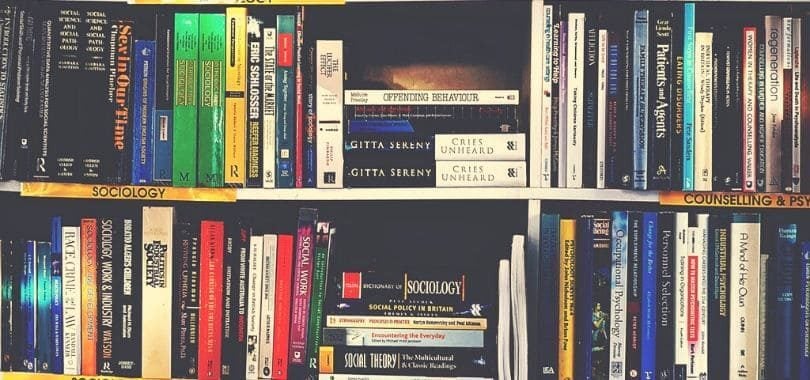Are you struggling with your SAT reading, or want to improve your score to result in a better SAT Composite Score? There are plenty of ways to study for this particular section of the exam. To improve your SAT reading, you should first know what to expect and what common mistakes other students made. Then you’ll want to focus on time management, practice exams, and understanding the tricks the test uses to confuse you.
1. Know What to Expect
The SAT Reading portion of the exam is 65 minutes long, has 5 passages for you to read (4 single and 1 set of two), and contains 52 multiple-choice questions. Each particular question will have four answer choices. The passages, between 500 and 750 words in length, will cover literature, social studies, history, and the natural sciences. Some passages may also include graphs or images to represent data.
These questions and passages are designed to test your
- Reading comprehension
- Understanding of textual evidence
- Understanding of central ideas or themes
- Vocabulary in and out of context
- Understanding of the overarching ideas of the passage
- Ability to assess and understand relationships
- Ability to understanding purpose, point of views, and arguments
- Understanding of graphs and data
- Ability to compare two passages
Know the Common Mistakes
There are quite a few errors that SAT test takers make when taking the Reading section. They include
- Poor time management
- Missing the context and, therefore, misunderstanding the following questions
- Using personal biases, outside information, or opinions to answer the questions
- Misinterpreting the graphs or not understanding how to use them to get information
- Failing to use process of elimination
We explained how to overcome some of these challenges below.
2. Manage Your Time
When it comes to the reading section of the SAT, many students feel they simply don’t have time to complete the section. This is likely due to the student rereading the passages and questions to make sure they’re answering it correctly.
While you definitely want to have your best shot at getting the right answer, you don’t want to waste so much time on one passage that you have little for the next. If you’re rereading the same sections over and over again, trying to understand what they’re saying in a single sentence, try to break the habit. It’s likely that sentence has nothing to do with the questions!
However, time management goes the other way, too. You don’t want to rush. You need to understand what the passage and question are asking. So take some time to determine what the question is talking about before jumping to what is seemingly the “obvious answer.”
3. Study
There are plenty of ways to study for the SAT, and that includes the reading section. You should be taking practice exams (see how they help below), using flash cards for vocabulary, and reading in your free time. If you’re a slow reader or are looking to increase your reading speed, this additional reading will definitely pay off.
You might also want to consider taking an SAT prep course, joining a SAT prep group at your school, or looking for a tutor to assist you.
Take Practice Exams
One of the best ways to improve your SAT reading score (or any aspect of the SAT, really) is to take practice exams. This will not only help you with time management – you’ll learn where you can slow down and where you need to speed up – but it will allow you to get a feel for the type of passages and questions the exam tends to cover.
Practice really does make perfect, and you don’t want your first introduction with SAT reading to be during the real deal.
Work On Your Weaknesses
One of the benefits of the practice exam is that they show you where your weaknesses and strengths lie. If you’re struggling in the reading section, but doing well in the math section, then you should be focusing more of your study time on reading. You’ll also want to understand what you’re failing to grasp in the reading section. Is it point of view, arguments, the graphs, or something else?
Talk to Your Teacher About Graphs
If you’re struggling with understanding the graph portions of an exam, make sure to talk to a math, science, or English teacher who may be able to assist you. They can also point you towards additional resources that can make it easier to comprehend what the data is trying to tell you.
4. Remember They’re Trying to Confuse You
Did you know that the SAT reading is actually designed to confuse you? That might feel a little “unfair,” but it’s a way to make sure you’re actually understanding the reading as well as the questions. This is why it’s so important to actually take the time to determine what the question is asking. That “obvious answer” could be a plant to trick you.
If you feel confused about how to answer a question, try to relax, re-read the question, and understand what you’re missing. If you’re still not getting it….
5. Skip Questions
The questions you’re presented on the SAT Reading are in chronological order, not in order of difficulty. The first question will be about the passage as a whole, but then the rest will continue drawing from the passage in a chronological order. The questions do not necessarily get harder at number 5. You might find a particular stumper at number 3. If you’re spending too much time on that question, go to the next, and return. You absolutely do not have to answer these questions in order.
If an entire passage is confusing to you, it’s okay – you can skip that, too, and return to it later as long as you’re managing your time properly.
6. Don’t Let Your Personal Opinions Creep In
The point of the SAT reading section is to test your understanding of the passage and the passage alone. Your personal opinions, biases, or any information outside of that passage should not play a role in your answer selection. It can be difficult, but those practice exams can really help you determine what the text is trying to say. Don’t look for the answer that backs up your opinion, but the one that is based in the text. If the question has words like “imply, suggest, or infer,” they’re trying to trick you!
7. Take Notes
Did you know you can write directly on the SAT book? You’ll also have a bit of scrap paper. Use these spaces to take notes! Underline sentences or words you think are important in the passage itself. The scrap paper can be used to jot down your thoughts and understanding of the reading. These can prove extremely useful when it’s time to answer the questions.
And remember take the notes as you read. Don’t take the notes after you’ve finished the passage. This only wastes time as you have to go back and double check things.
8. Take the SAT Twice
Did you know that it’s recommended that you take the SAT (or ACT) at least twice? This will help you get those initial test jitters out of the way, but also give you the experience you need to do better the second time around. Practice tests can be great, especially if you have good discipline when sitting for them, but there’s nothing like the real deal. Taking the exam a second or third time will naturally help you improve your Reading score.
And don’t worry – if you do worse on your second exam, the best SAT results are the only ones sent to your school.
The SAT reading can feel like a daunting section for some, especially if you don’t read a lot in your spare time. Which leads us to our final tip: read more! Reading in your free time will help you with your comprehension skills as well as your ability to read quickly. And, there’s no doubt, reading helps us better understand the world around us.
Want to see what score you need to get on the SAT reading sections or for your Composite Score in order to get into your dream college? Our College Match tool will help with that.






